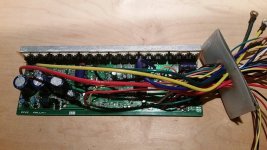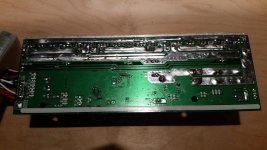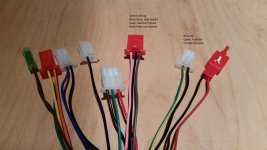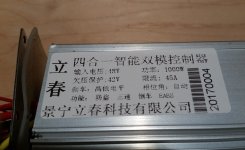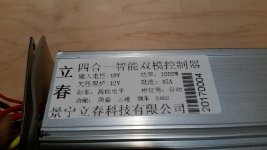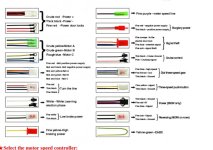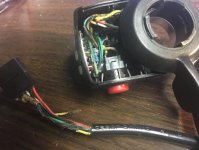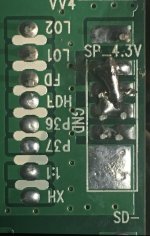OK I finally got the photos ready to show the details of the inside of the controller, if anyone is interested:
(This is for the 1500 watt controller rated for both 48V and 72V.... I've only tried mine at 48 V (57.8 Hot off charger)
Below each thumbnail is a link to a higher resolution image so as to not waste too much bandwidth.
http://www.az123.com/E-S/MC/MC1.jpg
http://www.az123.com/E-S/MC/MC2.jpg
http://www.az123.com/E-S/MC/MC3.jpg
http://www.az123.com/E-S/MC/MC4.jpg
http://www.az123.com/E-S/MC/MC5.jpg
http://www.az123.com/E-S/MC/MC6.jpg
http://www.az123.com/E-S/MC/MC7.jpg
THE CPU is marked:
GPM813116A0l014
MN68RA
1710
http://www.az123.com/E-S/MC/MC8.jpg
http://www.az123.com/E-S/MC/MC9.jpg
http://www.az123.com/E-S/MC/MC10.jpg
http://www.az123.com/E-S/MC/MC11.jpg
http://www.az123.com/E-S/MC/MC12.jpg
http://www.az123.com/E-S/MC/MC13.jpg
http://www.az123.com/E-S/MC/MC14.jpg
As you can see, there are some small 'bus bars' soldered along the phase traces. Look to be about 1.5MM X 3mm.
http://www.az123.com/E-S/MC/MC15.jpg
Mine is installed in a Chinese three wheel 'pickup truck' with 16S 2P 20AH BatterySpace (GBS) hardshell LiFe prismatic batteries)
So far, It has pulled 2.2 KW for a couple of seconds, and 2.1KW for maybe five seconds. (I haven't put any solder on the shunts to try to increase the amperage), although I did add some bus bars to the major battery power traces... they didn't come from the factory beefed up like the phase traces are. I tested it at WOT for about a mile up a slight grade pulling 800- 1600 watts, and the case stayed cool to the touch... I have a fan on a ~ 90F thermal switch that is Arctic Sllvered to the controller case, and so far the fan hasn't turned on... Ambient temp was about 60F at the time of the test.
I was wrong up a few posts above when I said the battery and phase wires were 16 ga. They are closer to 13Ga.... The insulation is just super-thin. I replaced them with 10Ga silicone wires though.
So far so good. Seems like a pretty good deal for $43.00.
